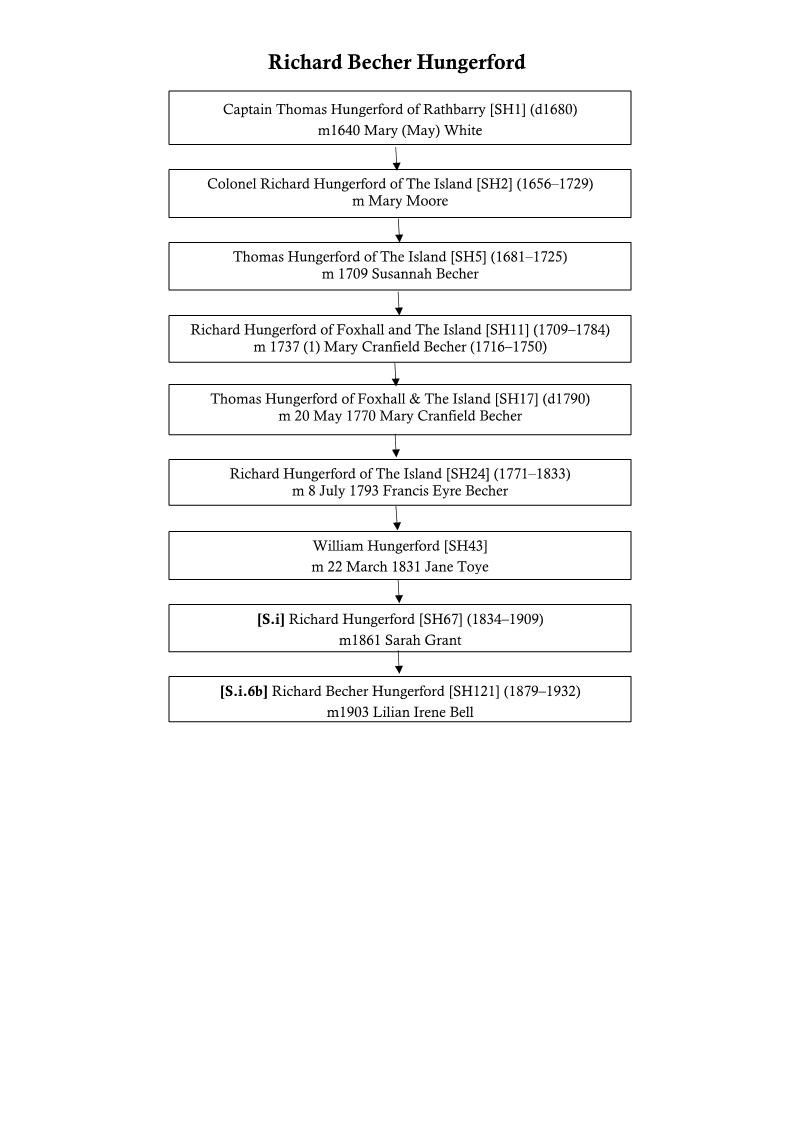Richard Becher Hungerford [SH121] was born 21 June 1879, Clontarf, Dublin, Ireland, baptised 24 July 1879 in the Parish of Clontarf. Richard died 3 November 1932, St Luke’s Hospital, Potts Point, Sydney, NSW. He married Lilian Irene Bell, 12 August 1903, West Ham, England. Lilian died 2 September 1910, Sydney, NSW, and is buried in Waverley Cemetery, Bronte, NSW. They had no children. Richard was educated at Colchester Grammar School and London University. He was one of the outstanding personalities in the electrical engineering world of Australia. Richard was an associate member of the Institute of Electrical Engineers, England, associate member of the Institution of Engineers, Australia, member of the central executive of the Standards Association of Australia, and a member of the Sydney Rotary Club. After receiving his early training in the workshops of the London and North-Western Railways, he joined the Western Electric Company of England, and was closely associated with the introduction of the first central battery exchange systems in Great Britain, and later with the first installation of similar equipment in Australia. He arrived in the Commonwealth in 1903, as agent for the Western Electric Company of Great Britain, and upon the formation of the Western Electric Company (Australia) Ltd, became managing director of that organisation. With the disposal by the Western Electric Corporation of America of all of it’s overseas interests in 1925, the name of the Australian company was altered to Standard Telephones and Cables (Australasia) Pty Ltd, and from that time Richard was closely associated with telephonic and radio development throughout the Commonwealth, and particularly the establishment of broadcasting stations controlled by the Commonwealth Government. Richard was a member of the Sydney Repertory Society, and his interests were music and politics (Nationalist). His religion was Anglican. His will was proved in London on 9 May 1933, his English possessions valued at £1208/18/11.

